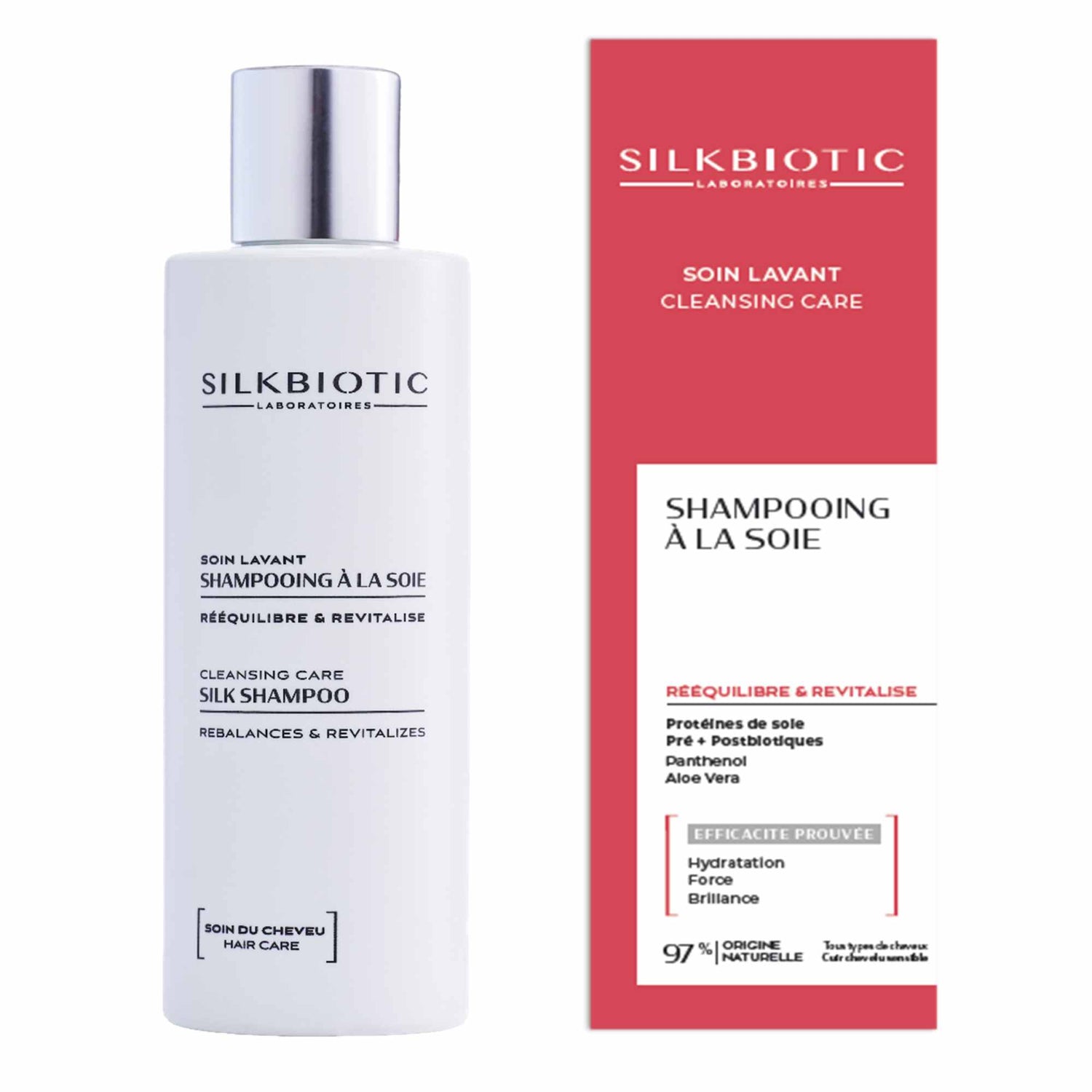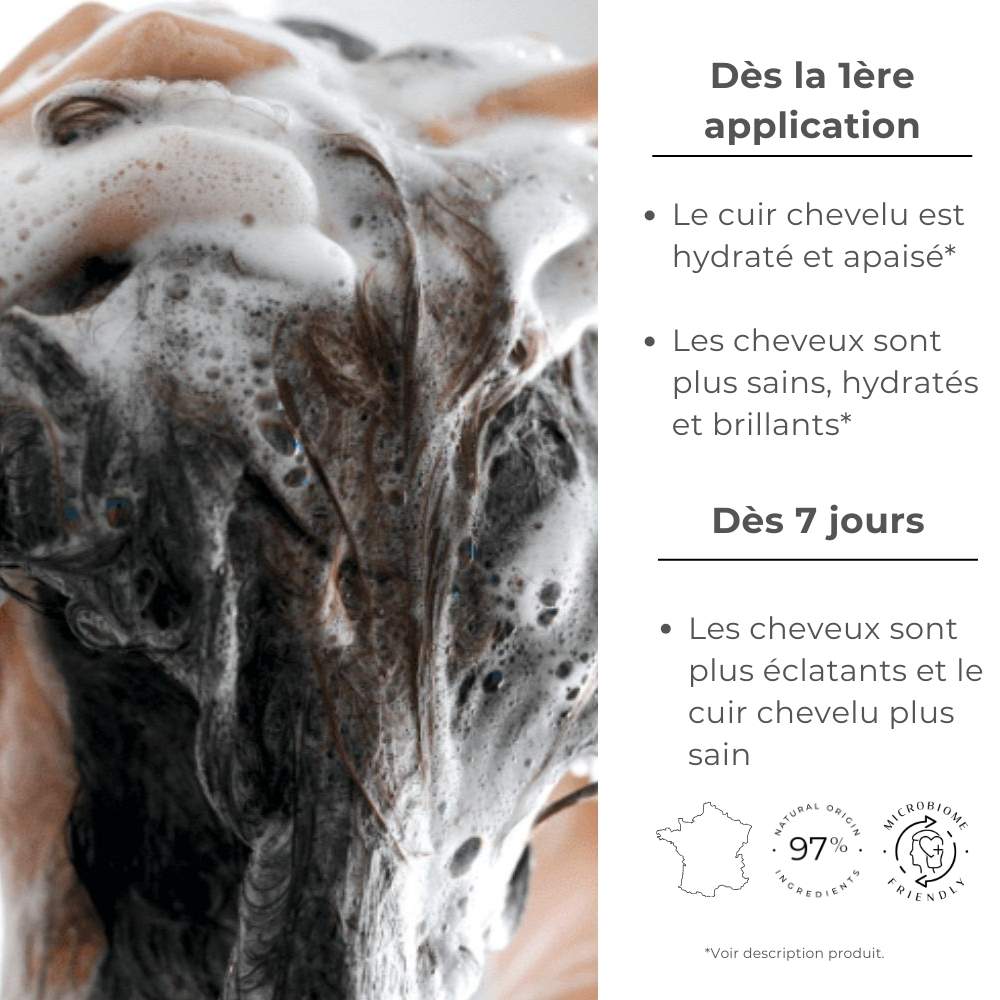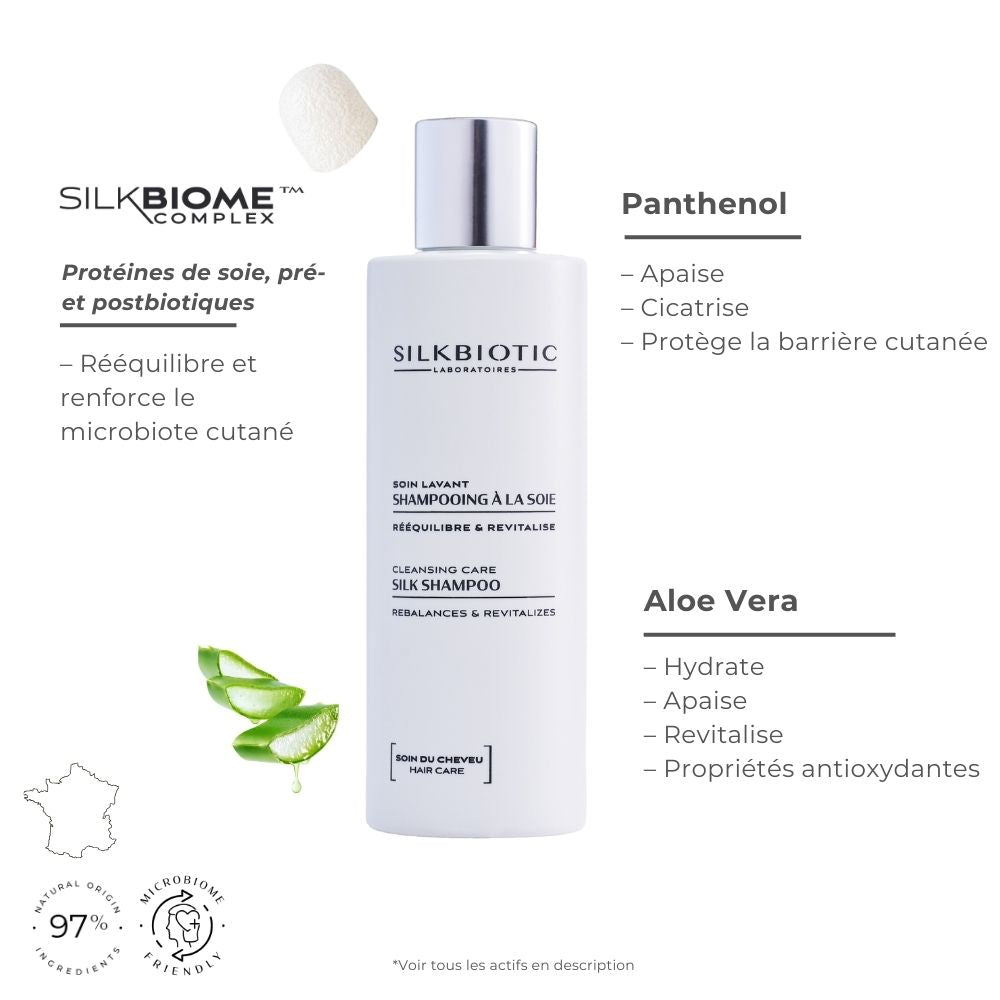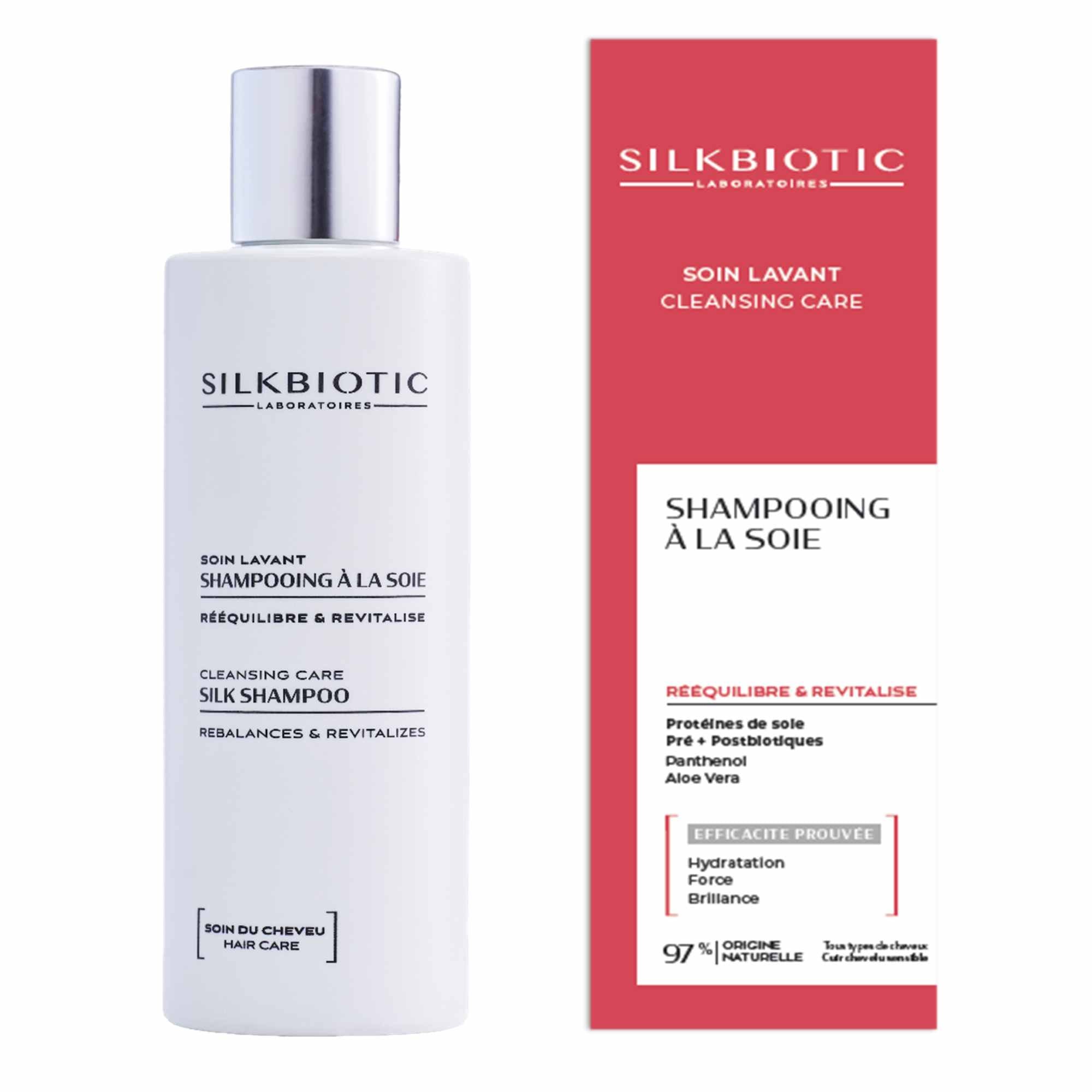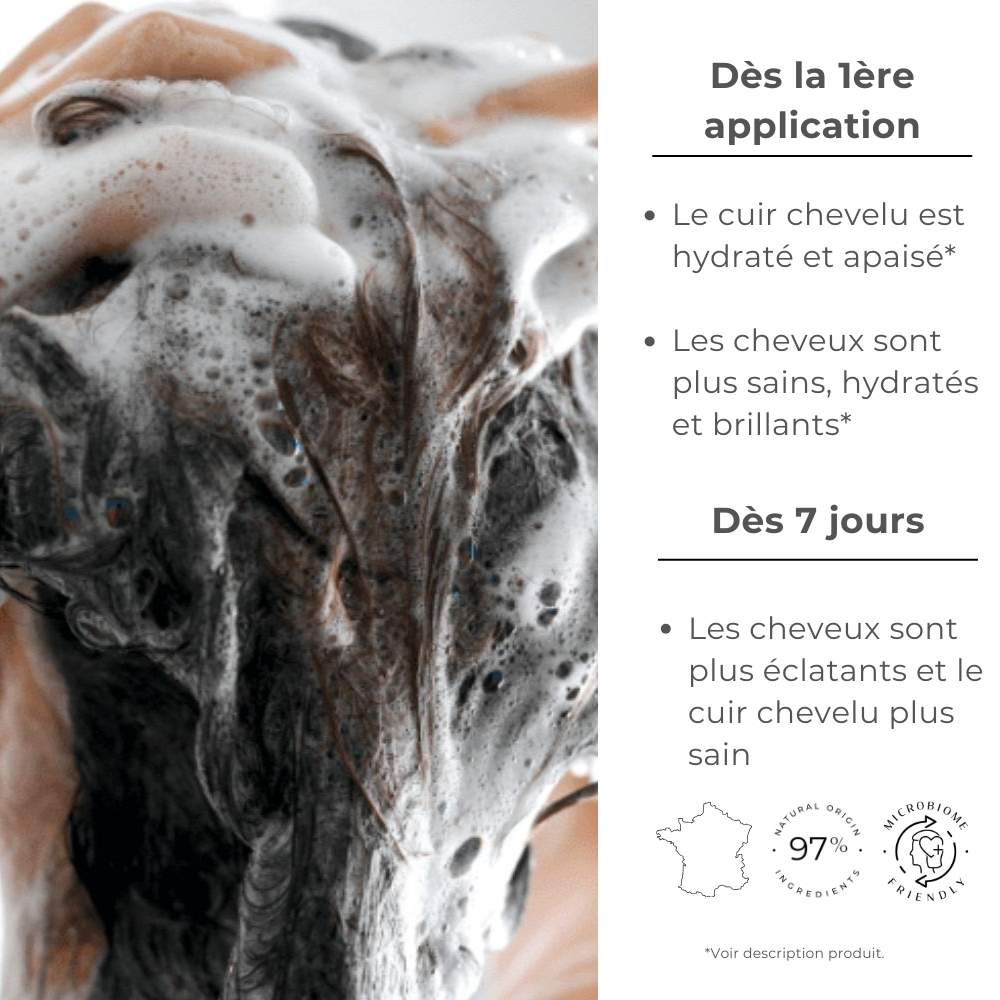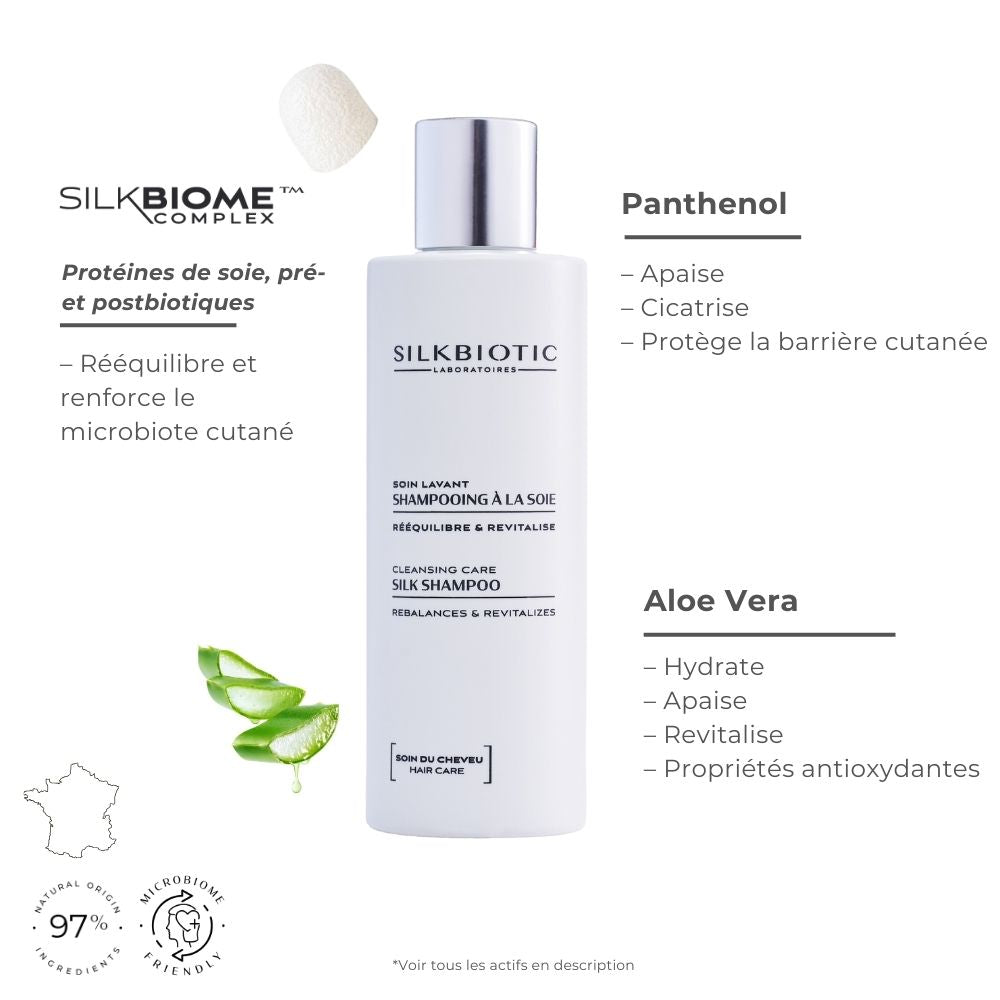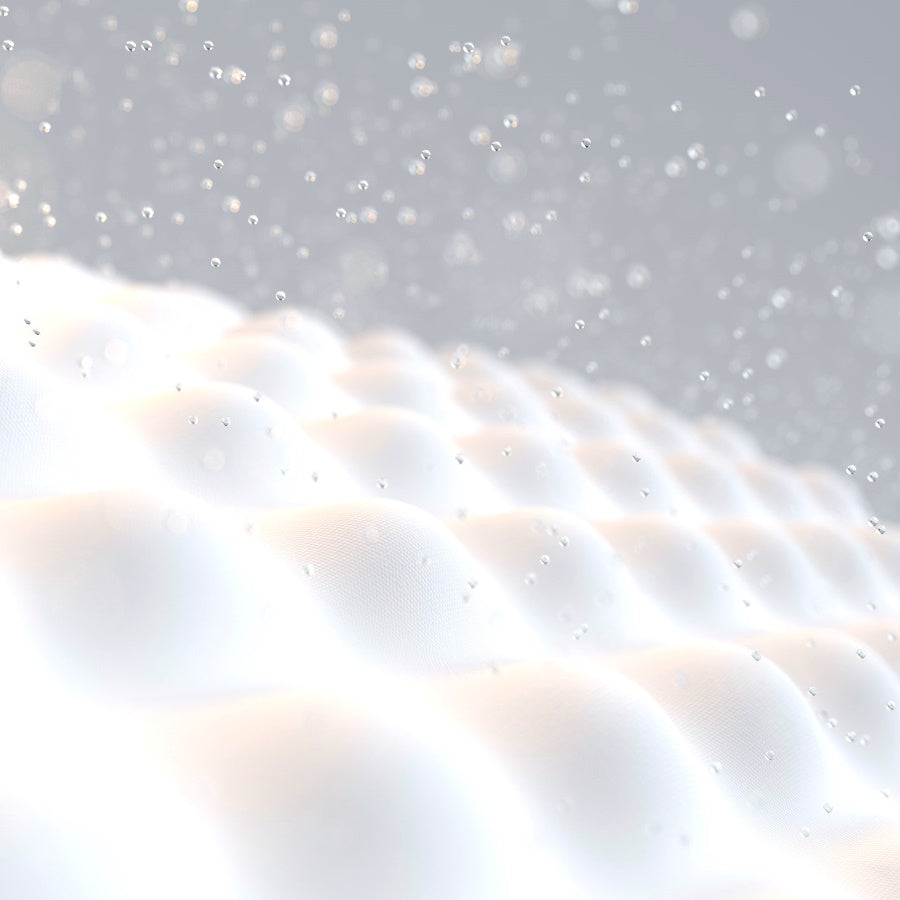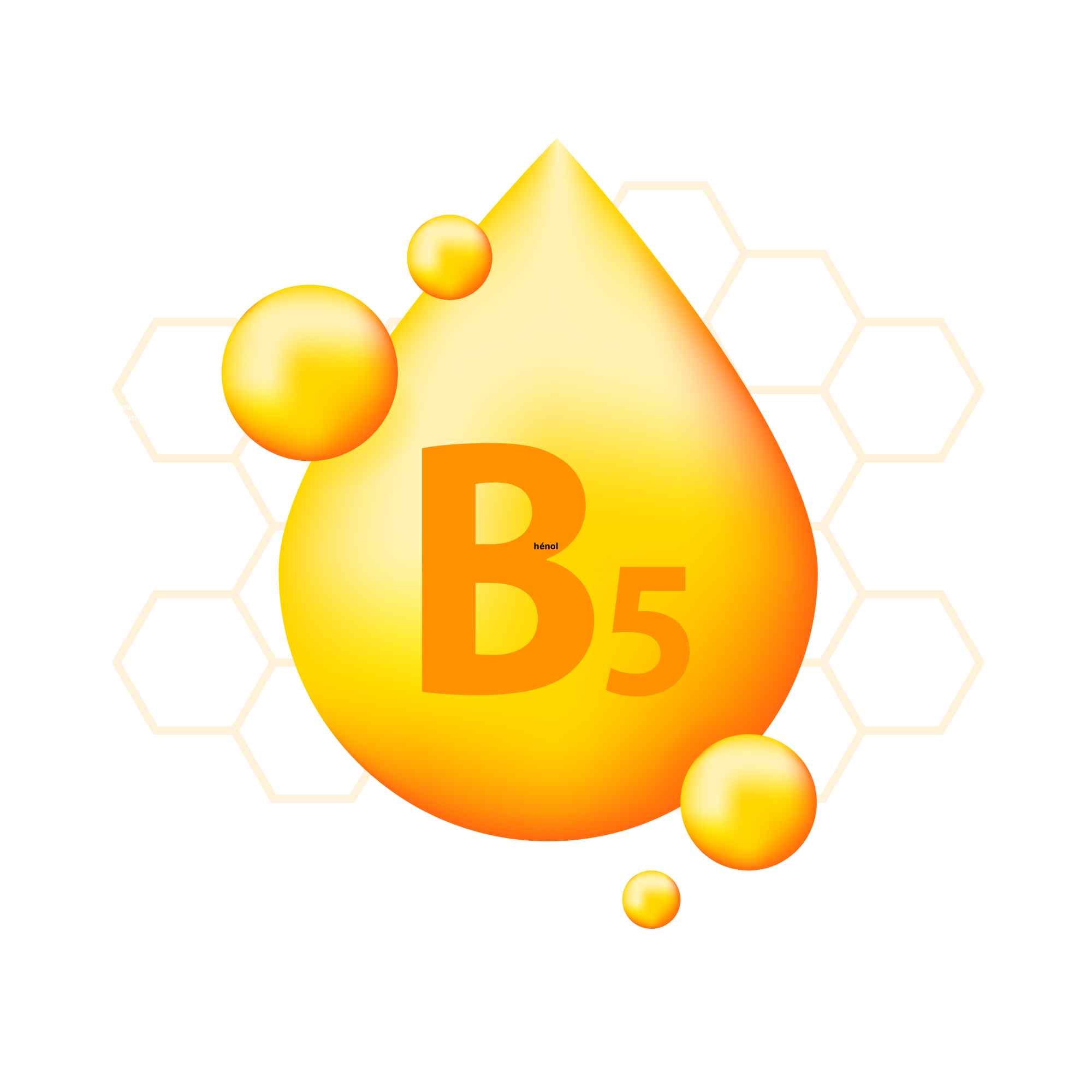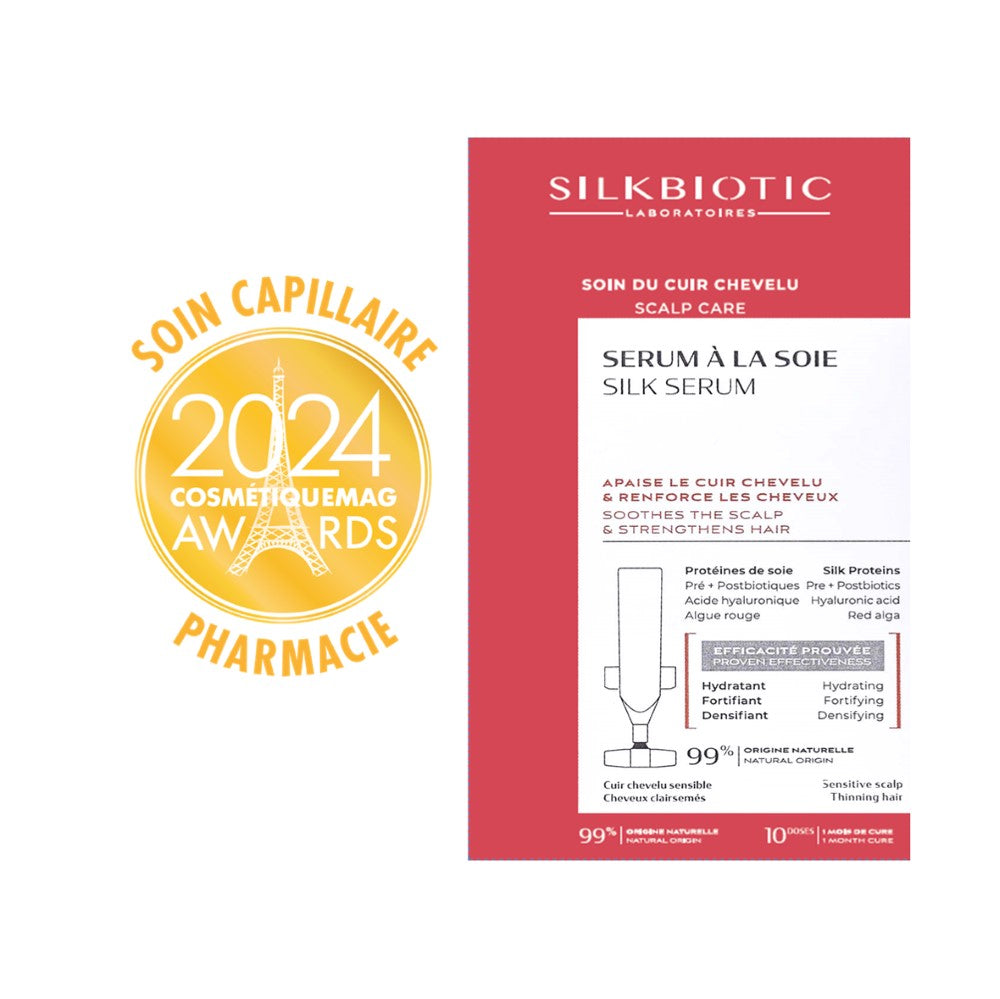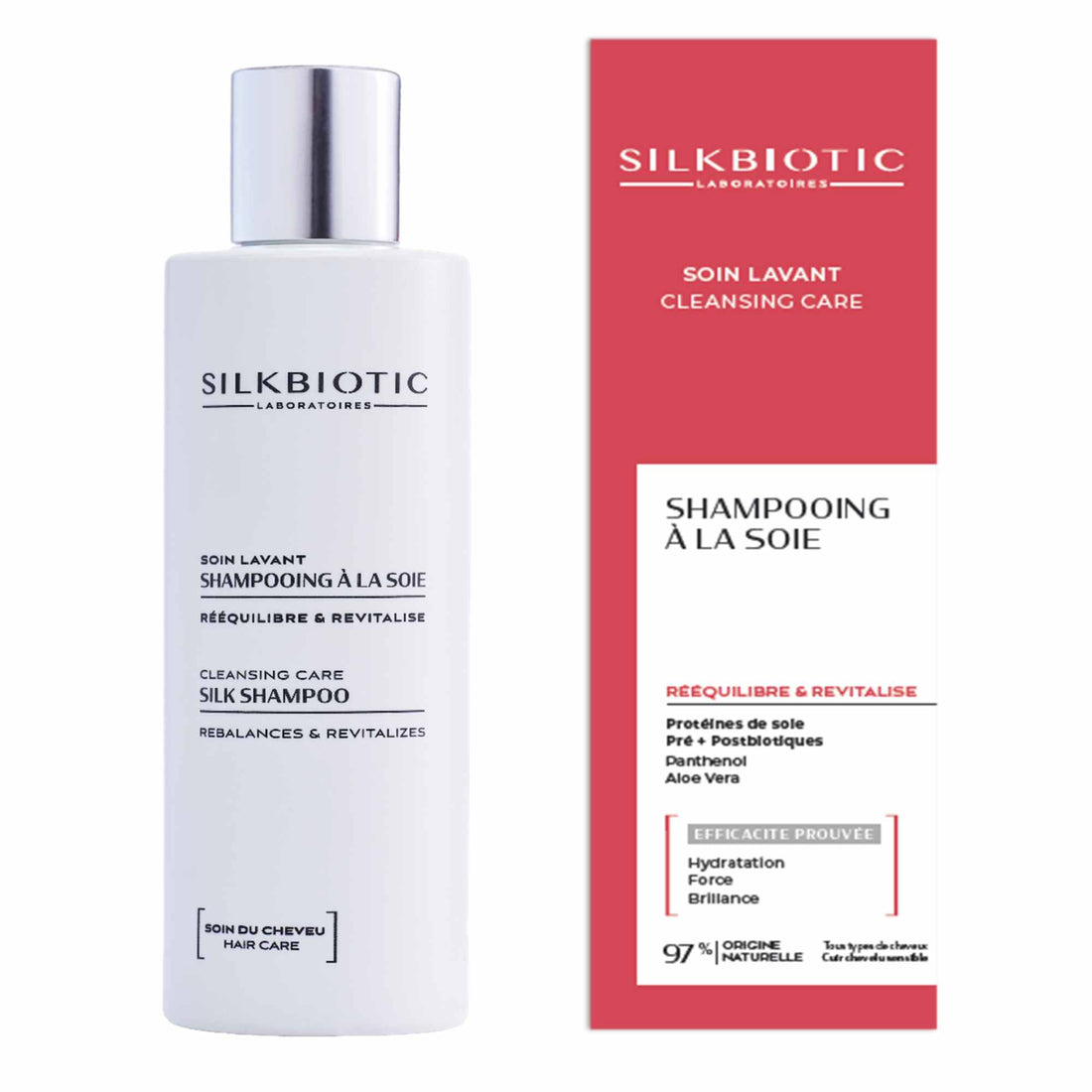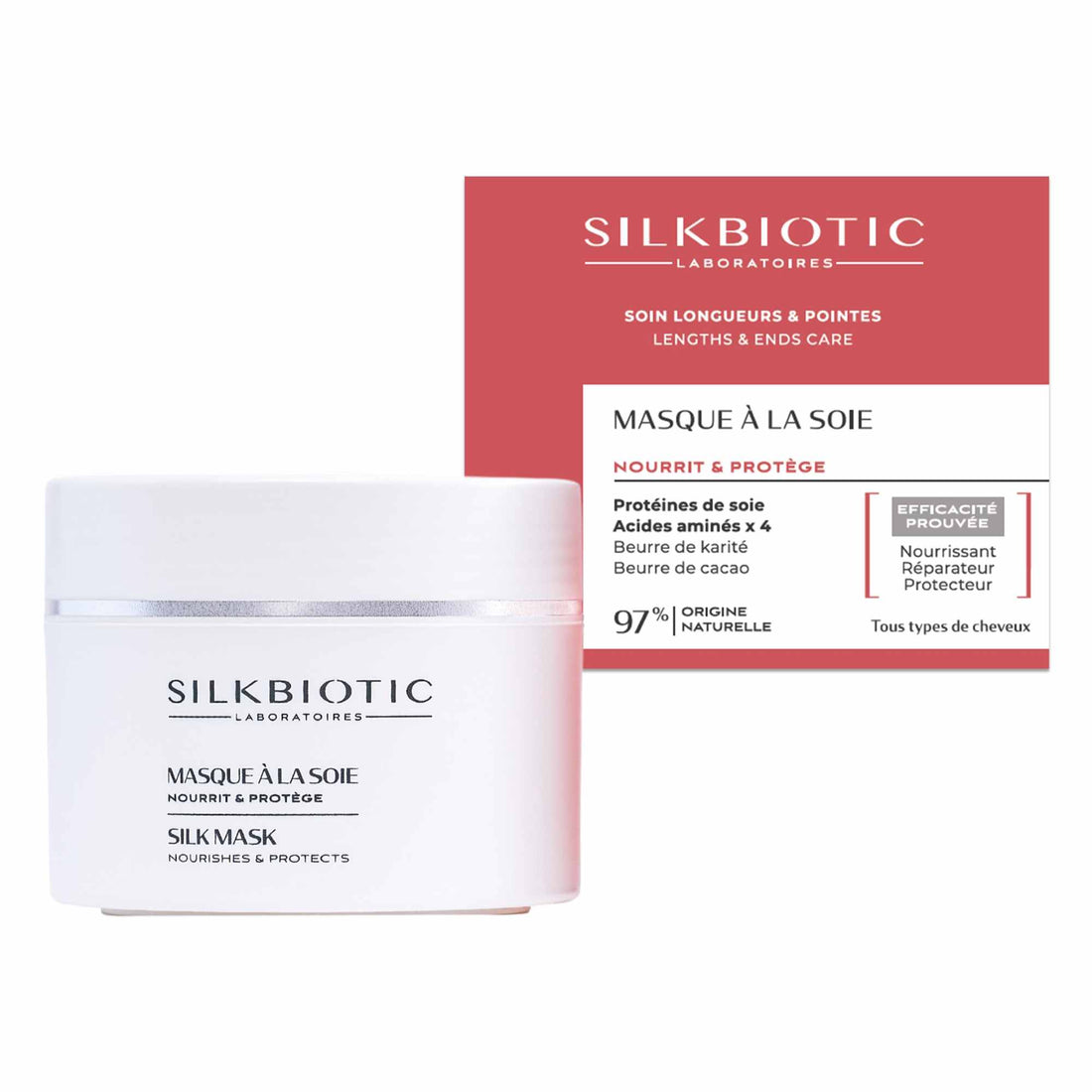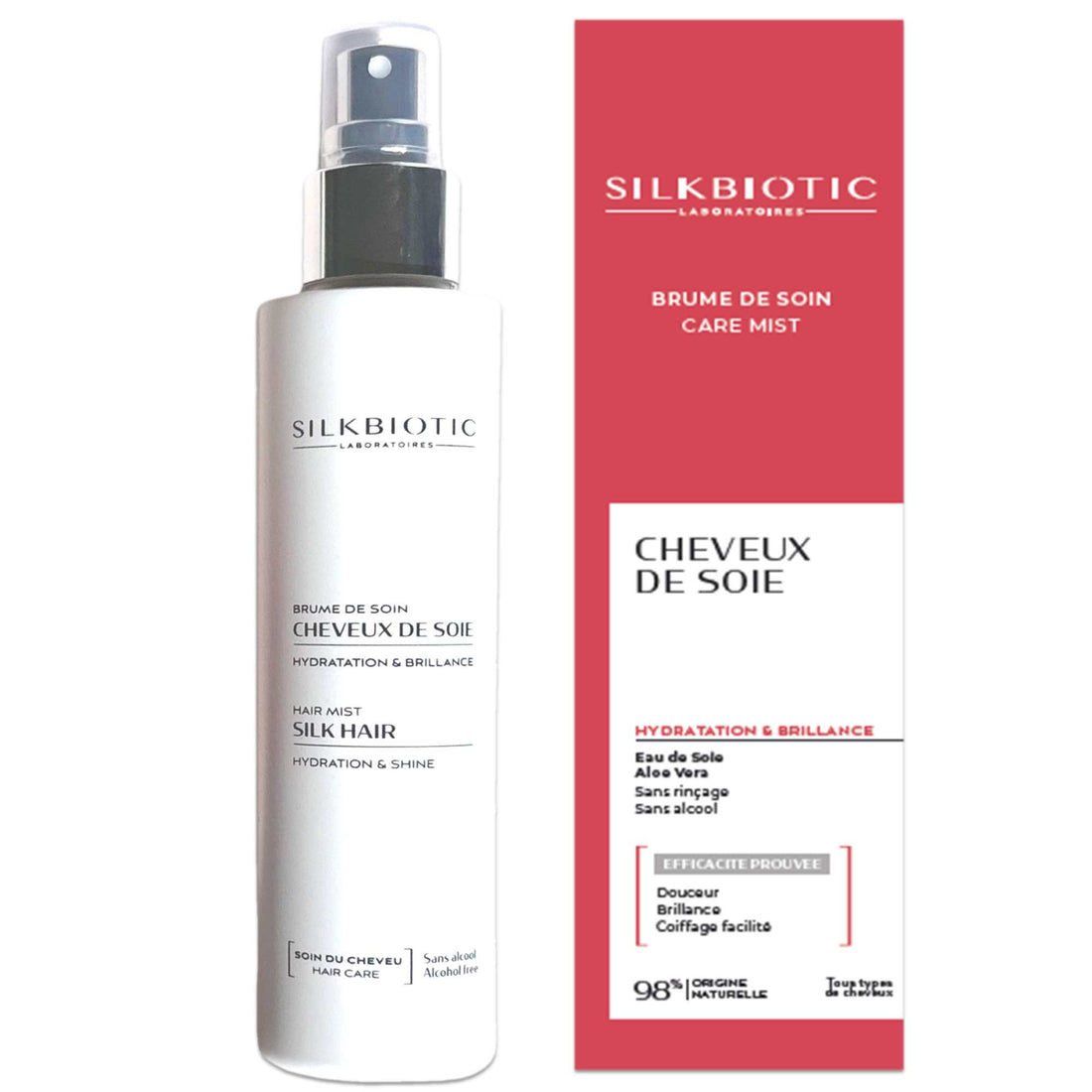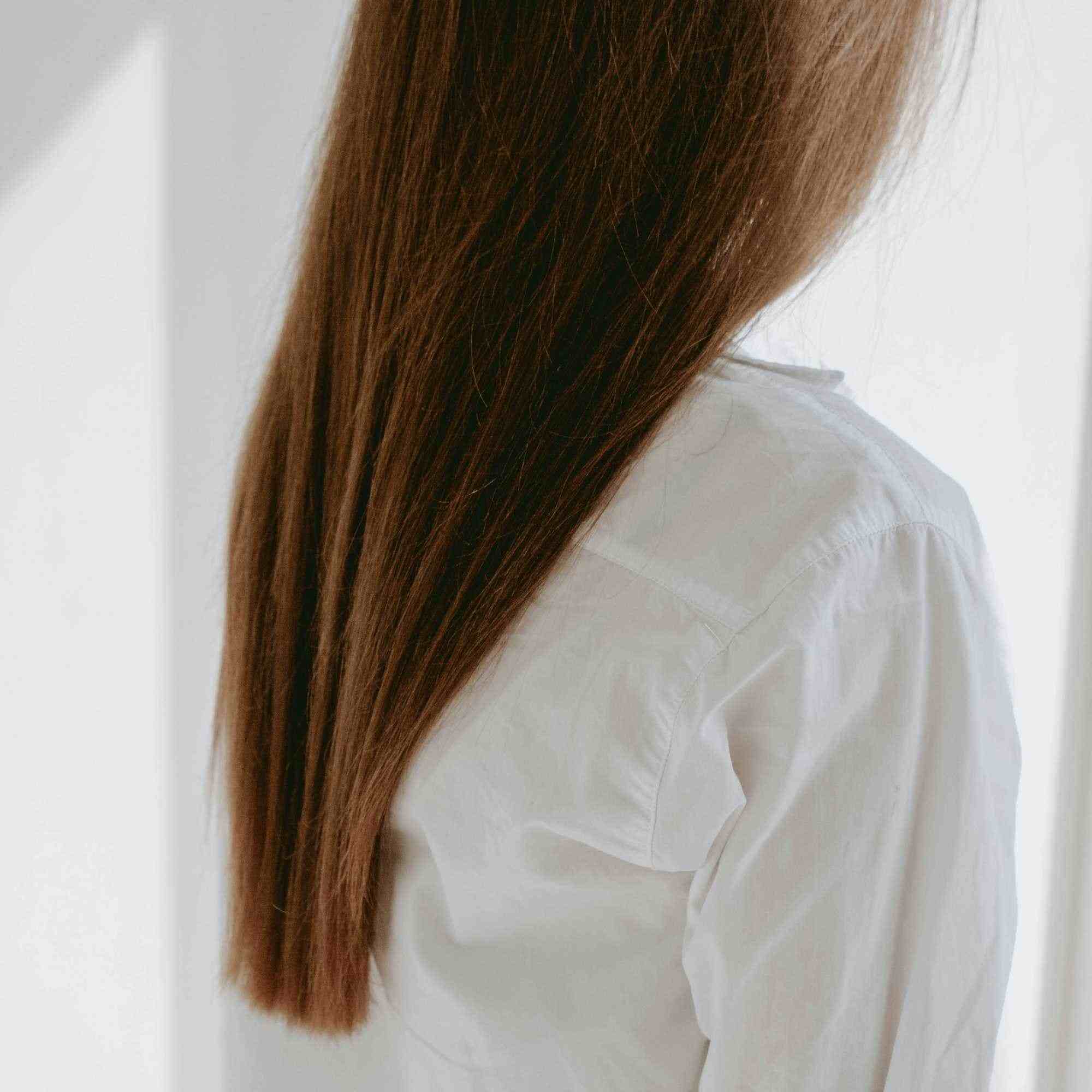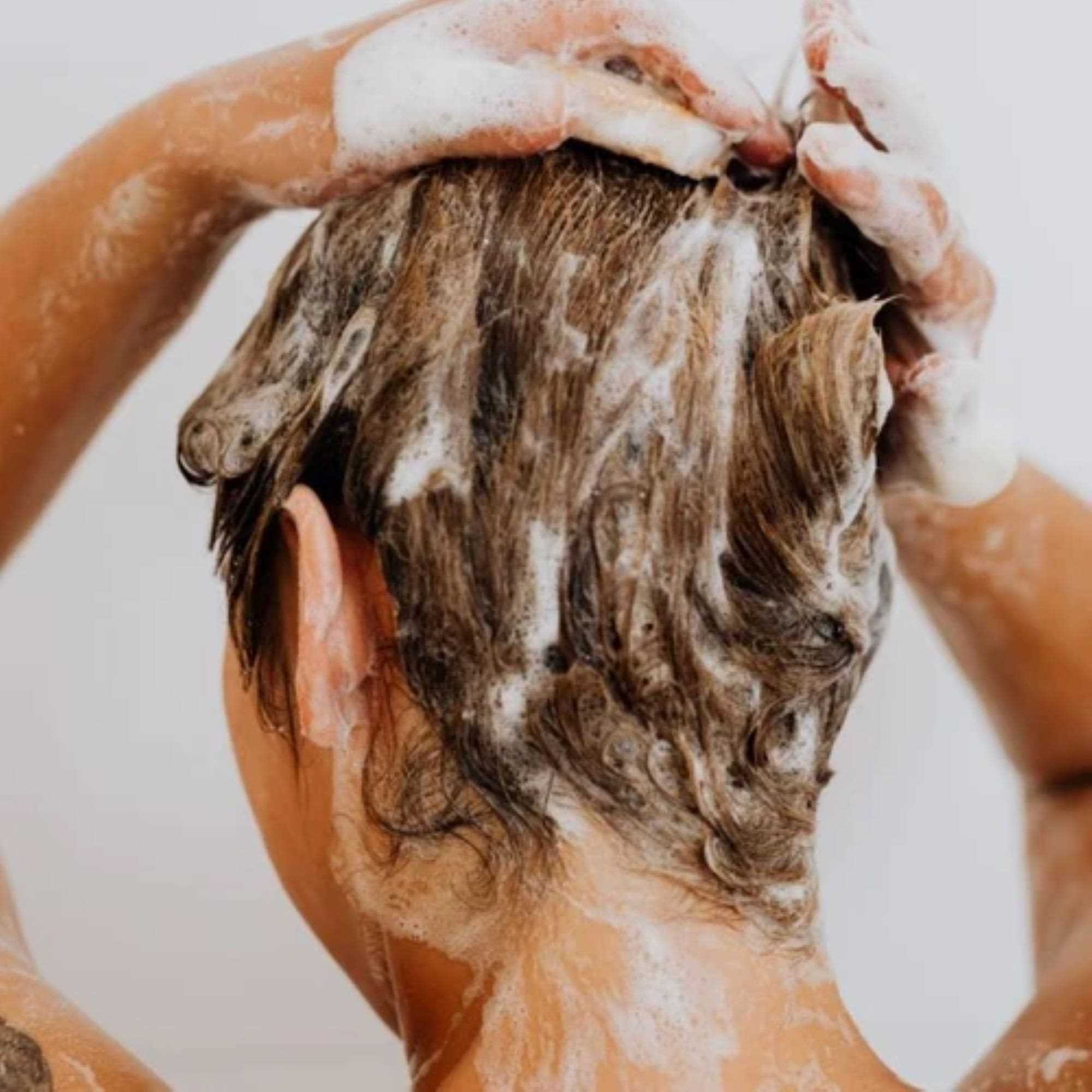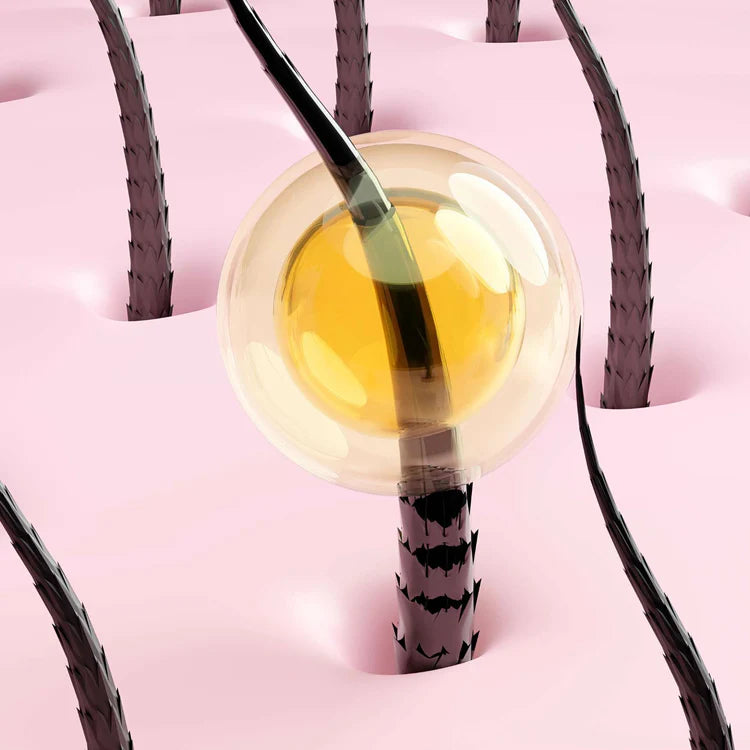THE HAIR CYCLE
Throughout our lives, our hair follows a growth loop known as the hair cycle. On average, a hair lives for four years. It dies, then falls out, before being replaced by a new hair.
THE ANAGEN PHASE: 90% OF OUR HAIR
The hair cycle begins with the anagen phase, or growth stage, in which 85-90% of our hair is found. For each individual hair, this stage lasts 4 to 5 years in women and 2 to 4 years in men. At this stage, the bulb in the hair root is very active, and keratin and melanin are formed, giving rise to hair growth.
THE CATAGENAN PHASE: CESSATION OF GROWTH
The catagen phase, or regression stage, corresponds to the cessation of hair growth. 1.5% of our hair is at this stage. Every day, 25 to 60 hairs pass from the anagen stage to the catagen stage, which lasts about 2 to 3 weeks. The deepest part of the hair follicle begins to break down.
THE TELOGEN PHASE: HAIR LOSS
The telogen phase, or resting stage, accounts for 8.5% of our hair. It corresponds to spontaneous hair loss over a period of 2 to 4 months, giving way to a new follicle in the anagen stage. It's also possible for hair in the telogen stage to coexist with new hair in the anagen stage, until it replaces it.
THE CAUSES OF HAIR LOSS
MALE HORMONES
Hormones are variables in hair loss, particularly androgens. These male hormones, which promote hair growth in the beard and moustache, have an inhibiting effect on hair growth. This explains why alopecia is more prevalent in men and women treated with androgens. Dihydrotestosterone, a by-product of testosterone, is also considered a factor in hair loss.
SEASONS
The hair cycle depends mainly on genetics and hormones. Hormones are influenced by sun exposure. As a result, it varies with the seasons. Each individual loses an average of 50 to 100 hairs a day, with two periods of greater importance: August/September and spring. In August, the percentage of hair in the telogen phase can reach 20%.
AGE
The hair cycle also varies with age. After birth, almost all hair is in the telogen phase, except in the frontal region of the scalp, where only 60% is in this phase. As the child ages, the percentage of hair in the anagen stage increases, and hair becomes thicker and darker. Before puberty, 90% of hair is in the anagen stage, which is perfectly normal. After puberty and for the rest of our lives, hair density and diameter decrease in both sexes. The percentage of telogen hair increases in both sexes, but is higher in men than in women. The duration of the anagen phase decreases, and empty follicles appear.
PREGNANCY AND MENOPAUSE
Pregnancy hormones influence hair loss. By the 14th week of pregnancy, a greater proportion of hair is in the anagen phase, with less hair loss. After delivery, there is an increase in the number of hairs in the telogen stage, and thus an increase in hair loss. The drastic fall in hormones during the menopause also leads to hair loss, although in men, this does not occur until the age of 75.
LIFESTYLE AND DISEASE
More generally, lifestyle and illness can influence hair loss. This can be due to poor diet, stress, smoking, pollution, illness, treatment or medication. Diet is particularly important, since proteins are needed to synthesize keratin and lipids are used to transport vitamins, which are essential energy sources for hair follicles. Hair loss can also be caused by mechanical factors, such as tight hairstyles that pull on the hair roots, or chemical factors, such as bleaching and perming, that weaken the hair.
THE DIFFERENT ALOPECIES

For some hairs, the hair cycle may not renew itself. This phenomenon mainly affects men. Here we explain the different causes and pathologies of hair loss.
SIGNS OF HAIR LOSS
To assess hair loss, several characteristics need to be measured. First of all, hair density is around 250 hairs/cm2 on our scalp. This density varies with age, sex, disease and treatment. The diameter of the hair shaft is around 50 to 100 µm, and shows the vitality of the hair. Also, the speed of hair growth, averaging 1cm per month, makes it possible to monitor the phenomenon of alopecia. Finally, the percentage of hair in the anagen phase averages 90%, and also shows the evolution of hair loss.
BALDNESS: ANDROGENETIC ALOPECIA
Baldness, also known as androgenetic alopecia, has a genetic and hormonal cause. It accounts for 95% of all cases of alopecia. It's a form of permanent hair loss where usually only the top of the head is affected. This is due to genetic programming that accelerates the hair cycle, resulting in hair loss. It is hereditary and is linked to two causes: high levels of dihydrotestosterone and hereditary hypersensitivity to it. Dihydrotestosterone acts on the follicle, reducing its growth phase. Very fine hair is the only one to grow, and the number of hairs decreases, until hair formation comes to a halt. Baldness affects 15% of men aged 20, 50% of men aged 50 and over 80% of men aged 70. In women, it affects 25% of 40-year-olds and 40% of 50-year-olds. This represents 3 women for every 5 men.
DIFFUSE ALOPECIA
Diffuse alopecia, or telogen effluvium, is frequent hair loss affecting the whole head. It accounts for 10% of all cases of hair loss. The causes are not genetic, but stem from stress, illness, hormonal imbalances, post-partum, deficiencies or chemotherapy. Women are the most affected by this phenomenon. It's not necessarily total hair loss, but is more or less long-lasting, and reversible in 4 to 6 months. To curb alopecia, it is possible to use hair care products containing active ingredients that regulate sebum secretion, stimulate hair bulb cells or compensate for deficiencies. Other options include taking vitamins or hormone treatments.
ALOPECIA AREATA - HAIR THINNING
Alopecia areata is a form of hair loss in which the entire head of hair suddenly falls out. It is caused by psychological factors, such as intense stress or a dramatic event. This type of hair loss generally has no return.



